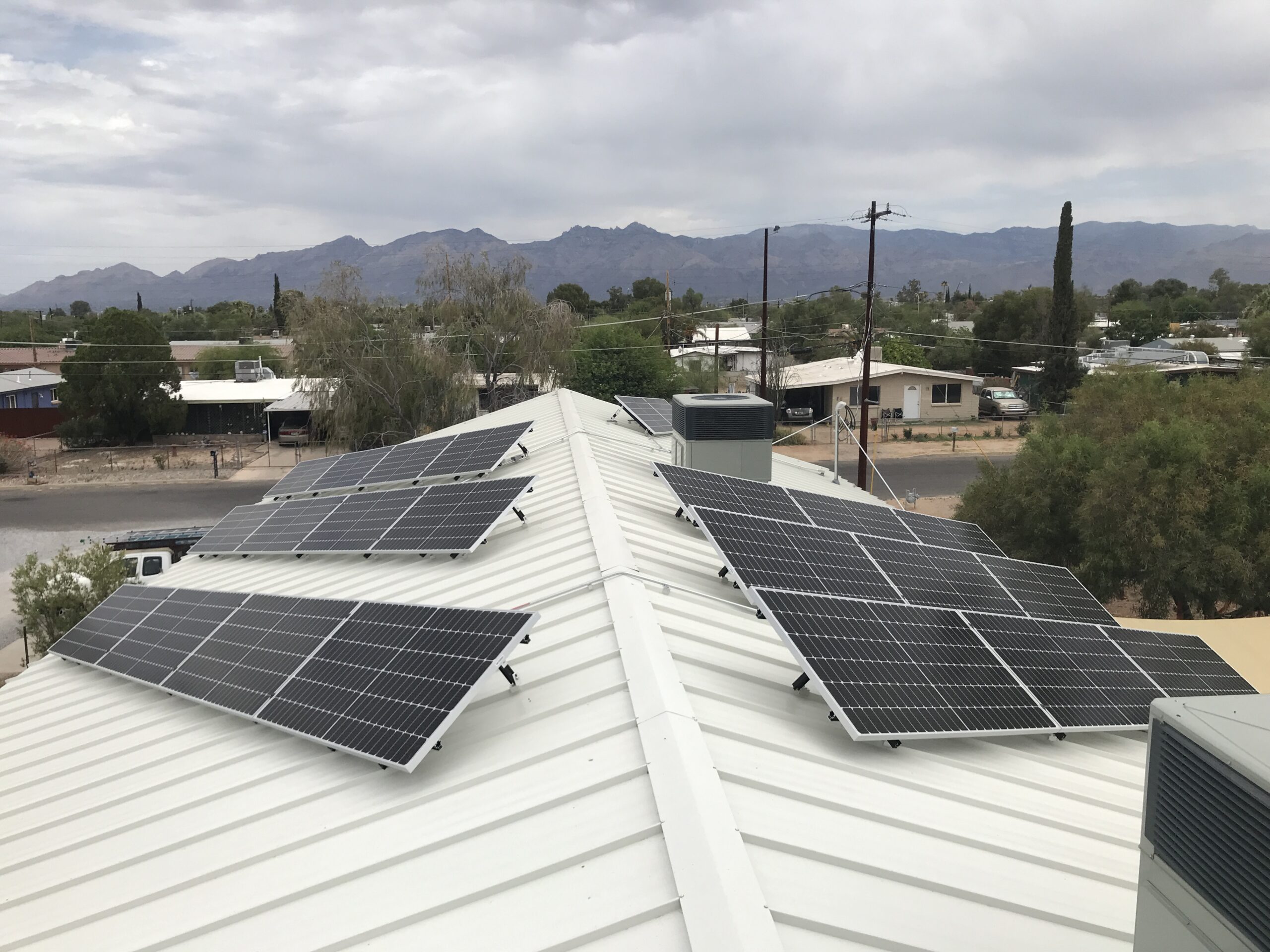For centuries, churches have served as a shelter from the storms of life. Now, churches like Shalom Mennonite Fellowship in Arizona are taking that responsibility to a whole new level.
Tapping into a New Source of Power
In 2023, the United States experienced 18 “weather and climate disasters,” which resulted in more than $1 billion in damage each, according to the National Oceanic and Atmospheric Administration. The rise of these events contributed to a substantial increase in the number of hours people spent without power. Between 2013 and 2021, the number of hours the average American was without power doubled.
When unpredictable storms knock out the grid, it affects millions of homes and businesses, putting vulnerable populations at risk. Power outages disrupt communication, water supply, and transportation. They close businesses down. They cause food to spoil and water to become contaminated. They prevent people from accessing vital medical devices.
As the frequency and intensity of severe weather increases, more and more communities are assessing their reliance on the larger energy grid in order to prevent human suffering.
One solution is to turn to microgrids to build energy resiliency.
Shalom Mennonite Fellowship’s Microgrid

Microgrid installation at Shalom Mennonite Fellowship in Tucson, AZ.
Becoming a resiliency center wasn’t the original goal for Shalom Mennonite Fellowship when it installed its rooftop solar panels. Its objectives weren’t financial savings, either. Shalom Mennonite was driven by a conviction that Christians are called to care for creation.
Besides installing solar panels and battery backup, its creation care efforts have included grading its campus to capture runoff during Tucson’s seasons of intense rains, ending its natural gas service, and using all-electric appliances.
To expand its solar system’s efficacy, the church connected two of the buildings on their lot, which allows it to use more of the power it generates onsite. The solar panels also power a house next door to the church. Setting up their grid this way means the system will pay for itself through energy savings over the course of its 25-year lifespan.
The church’s microgrid is equipped with 10 kilowatts of solar panels and a Tesla Powerwall battery, which provides enough backup power to run a few parts of the church if the power goes out.
Why Microgrids Matter for Energy Resiliency
According to Mahmoud Kabalan, professor of electrical and computer engineering at University of St. Thomas in Minnesota, microgrids bring the source of power closer to users, which reduces their reliance on our large, central power plants that are more vulnerable to natural disasters and extreme storms.
With closer-to-home power generators such as solar panels, small-scale wind generation, and other standby generators, families and neighbors will be less at-risk when the large-scale grid goes down. According to Kabalan, it’s likely that more and more homebuyers will expect some kind of microgrid system in the future, just like we’ve come to expect a home to come equipped with a fridge or an oven.
But it’s unlikely that these changes will happen rapidly. In the meantime, communities need to be able to provide energy solutions for uncertain times, and community microgrids may be part of that solution.
Churches like Shalom Mennonite Fellowship could become centers for such microgrid systems, bringing energy resilience to their communities. Ten churches in California have already set themselves up as resiliency centers in their neighborhood.
“Resilience centers” provide safety and security to people who have been affected by severe weather, natural disasters, or other hazardous events.
When the power goes out in the neighborhood, a church that has established itself as a resilience center can provide people with a place to drop in and charge their phone, pick up some food, or find temporary shelter. These simple, everyday concerns are magnified during a weather crisis. Churches can alleviate these concerns and care for the most vulnerable in their communities at the same time.
Churches who are interested in becoming a resilience center should survey the common needs and adverse conditions that affect their communities to plan for appropriate resources. In California’s communities, for example, air filtration is an important aspect of a church’s planning, since wildfires are so frequently an issue. In other regions, some alternative energy sources may be more effective than others.
Connect with your state’s Interfaith Power & Light office to help your church make a plan to support your community’s energy resilience. It can make a world of difference for your community.





 Copyright
2024
Root and Vine
Copyright
2024
Root and Vine